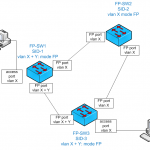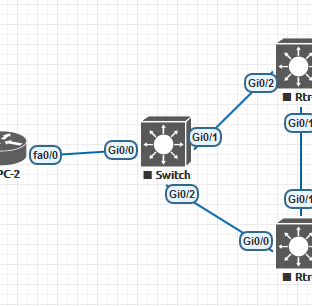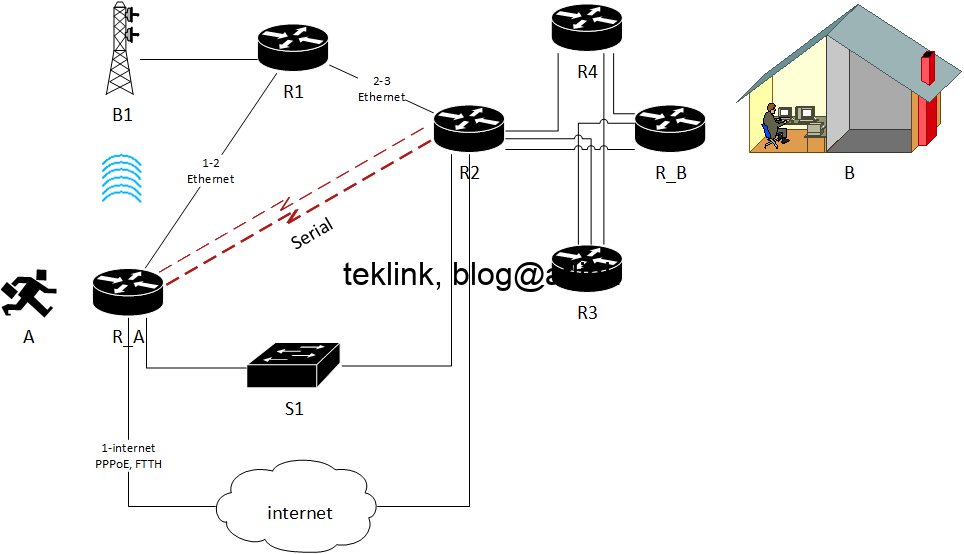- GRE Multipoint at Spoke which allows Spoke to Spoke tunnels
- And NHRP redirect at Hub that hints Spoke to direct upcoming packets toward target Spoke
- Cef shortcuts at Spoke enables local optimzation of Cef operation upon reception of NHRP redirects.
Now we could ping the broadcast address from the hub. To obtain the same result from R2 as an example, it is sufficient to add a new NHRP multicast map pointing towards R3:
| R2#ping 101.0.0.255 Type escape sequence to abort. Sending 5, 100-byte ICMP Echos to 101.0.0.255, timeout is 2 seconds:Reply to request 0 from 101.0.0.1, 32 ms Reply to request 0 from 101.0.0.3, 60 ms Reply to request 1 from 101.0.0.1, 60 ms Reply to request 1 from 101.0.0.3, 76 ms Reply to request 2 from 101.0.0.1, 32 ms Reply to request 2 from 101.0.0.3, 48 ms Reply to request 3 from 101.0.0.1, 40 ms Reply to request 3 from 101.0.0.3, 60 ms Reply to request 4 from 101.0.0.1, 28 ms Reply to request 4 from 101.0.0.3, 48 ms R2# |
| R2#sh run inter tun 0 Building configuration…Current configuration : 334 bytes ! interface Tunnel0 ip address 101.0.0.2 255.255.255.0 no ip redirects ip nhrp map 101.0.0.1 1.0.0.101 ip nhrp map 101.0.0.3 1.0.0.103 ip nhrp map multicast 1.0.0.101 ip nhrp map multicast 1.0.0.103 ip nhrp network-id 101 ip nhrp nhs 101.0.0.1 ip nhrp shortcut tunnel source FastEthernet0/0 tunnel mode gre multipoint endR2# |
At the end, DMPVN is very flexible when it comes to the handling of broadcast domains of 3 or more routers as we compare to classical Ethernet, PPPoE, etc.





